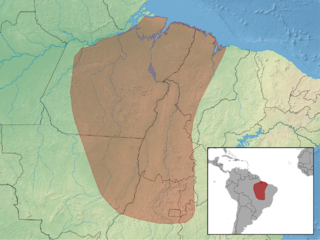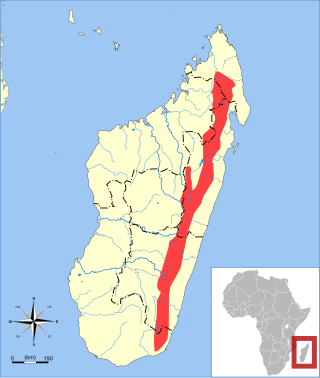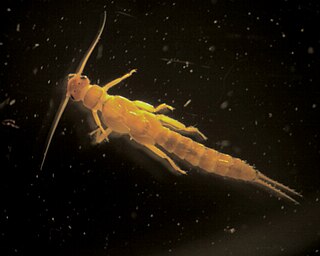
Plecoptera is an order of insects, commonly known as stoneflies. Some 3,500 species are described worldwide, with new species still being discovered. Stoneflies are found worldwide, except Antarctica. Stoneflies are believed to be one of the most primitive groups of Neoptera, with close relatives identified from the Carboniferous and Lower Permian geological periods, while true stoneflies are known from fossils only a bit younger. Their modern diversity, however, apparently is of Mesozoic origin.

Roberto's spiny-rat or Para spiny rat, is a spiny rat species found in Brazil.
Oecomys roberti, also known as Robert's oecomys or Robert's arboreal rice rat, is a rodent species from South America in the genus Oecomys. It has a broad distribution in the Amazon biome, being found in Bolivia, Brazil, French Guiana, Guyana, Peru, Suriname and Venezuela.
Robert's hocicudo is a rodent species from South America. It is found in Brazil and Paraguay.
Avenionia roberti is a species of minute freshwater snail with a gill and an operculum, an aquatic gastropod mollusk or micromollusk in the family Hydrobiidae.
Robert's snow vole is a species of rodent in the family Cricetidae. It is found in Azerbaijan, Georgia, the Russian Federation, and Turkey. Its natural habitats are temperate forests and temperate grassland.

The voalavoanala is a species of rodent in the family Nesomyidae. It is the only species in the genus Gymnuromys. It is found only in Madagascar. Its natural habitat is tropical dry forests.

The white-bellied robin-chat is a species of bird in the Old World flycatcher family Muscicapidae. It is the only species placed in the genus Cossyphicula. It is found in western Cameroon, Bioko and the Albertine Rift montane forests. Its natural habitats are subtropical or tropical moist lowland forest and subtropical or tropical moist montane forest.

Alloperla is a genus of stoneflies in family Chloroperlidae. It contains the following species:

Eusthenia nothofagi is a species of stonefly in the family Eustheniidae. It is endemic to Australia, where its range is restricted to Victoria. It is known only from the Otway Ranges and its common name is the Otway stonefly.
Riekoperla darlingtoni, the Mount Donna Buang wingless stonefly, is a species of stonefly in the family Gripopterygidae, which is endemic to Australia.

The Nemouridae are a family of stoneflies containing more than 700 described species, occurring primarily in the Holarctic region. Members of this family are commonly known as spring stoneflies or brown stoneflies. Fly fishermen often refer to these insects as tiny winter blacks.

The Cachar wedge-billed babbler or chevron-breasted babbler is a species of bird in the Old World babbler family (Timaliidae). It is named for the Cachar Hills in southern Assam.

Chloroperlidae are a family of stoneflies, commonly known as green stoneflies, with more than 200 species and 22 genera. They appear green to yellow in colour, and are popularly used among fisherman as bait for trout fishing. Green stoneflies live in the benthic zone of the cold streams and rivers of five continents and four zoogeographical regions, emerging from the water to live in the riparian zone as adults. They are sensitive to pollutants, making them an indicator species for determining the quality of water bodies. Chloroperlidae are hemimetabolous, having no pupal stage, but instead hatch from eggs as nymphs and mature directly into adults. They are omnivorous, feeding on small organisms and plant particles, and become more carnivorous as they mature. The classification of Chloroperlidae is contested, with some believing that they should be considered as members of different orders, as opposed to the order Plecoptera that they currently belong to.
Pseudambassis roberti is a species of fish in the family Ambassidae, the Asiatic glassfishes. It is sole species in the genus. It is endemic to Burma. The Catalog of Fishes classifies this species as Parambassis robertsi. The specific name honours the American ichthyologist Tyson R. Roberts.
Alloperla concolor, the duckhead sallfly, is a species of green stonefly in the family Chloroperlidae. It is found in North America.










